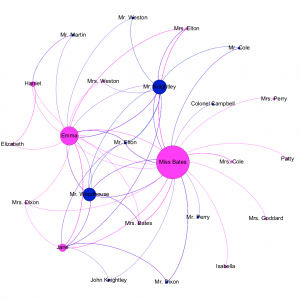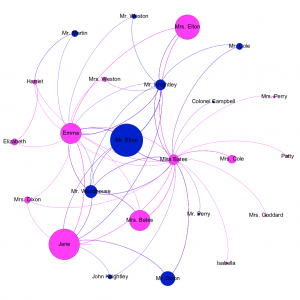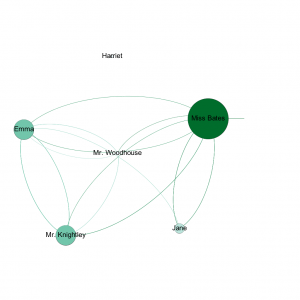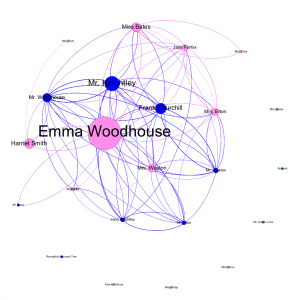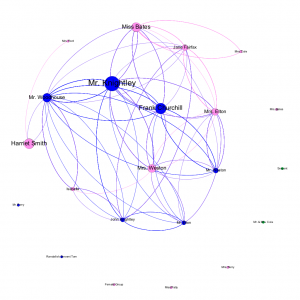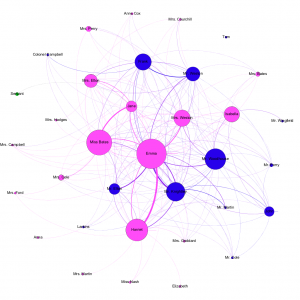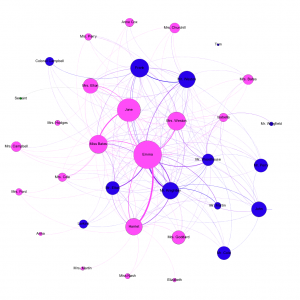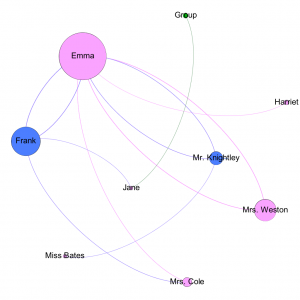
As this chapter depicts a party, the flow of conversation was challenging to depict graphically. The first, and arguably most significant speech in the chapter is when Mrs. Cole relates to a group of people the gossip about Jane Fairfax receiving a mysterious pianoforte. Austen summarizes this passage but does not provide the exact words of Mrs. Cole’s relation. Further, we know that Mrs. Cole is talking generally to a group, but we do not know exactly who is in that group. The ambiguous nature of Mrs. Cole’s audience creates an atmosphere of general mingling and portrays Mrs. Cole as the deliverer of news and the source of the gossip. For these reasons, I did not include this passage in the graph, even though it is the origin of all the gossip in this chapter. However, there is one concluding piece of dialogue[1] from Mrs. Cole that does in some way manage to capture her role in the spread of gossip, if not fully.
Another important consideration in graphically representing this chapter was the consideration of time. When reading Austen’s description of the party, one can imagine a relatively large group of characters mingling. Characters move from group to group, listening, talking, and sharing gossip. However, there are only two primary sections of gossip-driven dialogue in the chapter, one between Emma and Frank Churchill and the other between Emma and Mrs. Weston. Portraying these conversations graphically does not fully capture the sense of time in the chapter. For instance, someone interrupts Frank and Emma’s conversation, and they both mingle with other characters before reuniting and continuing their previous conversation. Although the graph portrays this chapter as one continuous conversation, it is important to note the failings of a graphical portrayal of narrative.
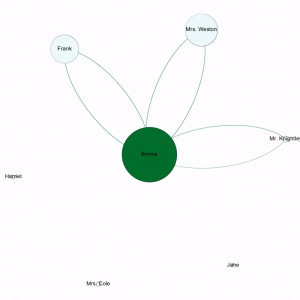
Note the significant difference between the automatically generated graph and the manually created one. The manual graph much more clearly captures the flow of conversation as among characters, whereas the automatic graph is much more stark, with lines only from Emma to each character she interacts with. This difference is likely due to a reader’s ability to detect nuances in conversation that the model for conversation performed by the automatic version cannot. For instance, Mr. Knightley calls out to Miss Bates to stop Jane from singing for too long. However, this piece of dialogue is not followed by a response from Miss Bates, so the automatic graph does not portray this interaction.
[1] “‘One can suppose nothing else,’ added Mrs. Cole, ‘and I was only surprized that there could ever have been a doubt. But Jane, it seems, had a letter from them very lately, and not a word was said about it. She knows their ways best; but I should not consider their silence as any reason for their not meaning to make the present. They might chuse to surprise her” (168-9).
